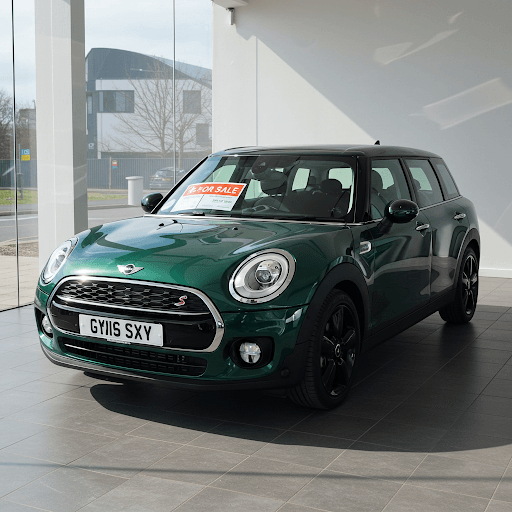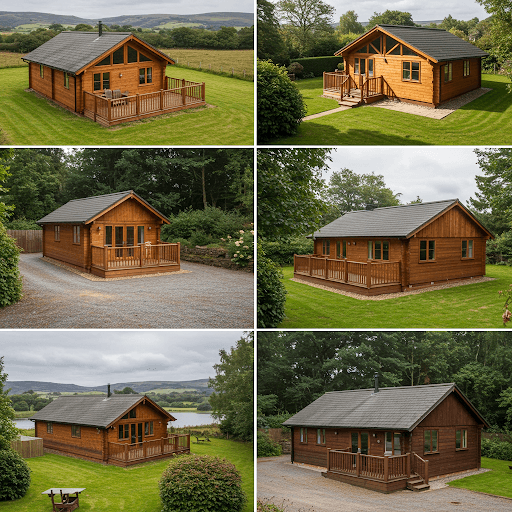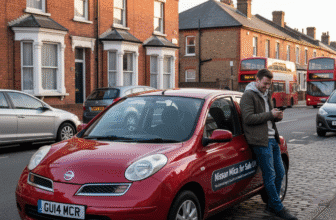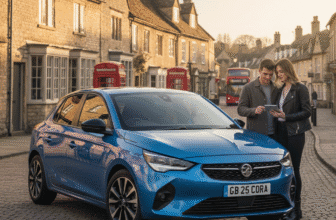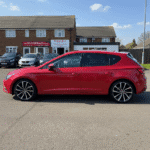
Finding Your Perfect SEAT Leon for Sale: A Comprehensive UK Guide
The UK car market is a bustling place, filled with options catering to every need and budget. Among the standout contenders in the fiercely competitive family hatchback segment, the SEAT Leon consistently shines. Offering a compelling blend of sharp Spanish design, engaging driving dynamics, everyday practicality, and strong value for money, it’s no wonder that finding a “SEAT Leon for sale” is a popular search query for savvy British buyers. Whether you’re looking for a nearly new model packed with the latest tech or a reliable, budget-friendly older version, the Leon offers something for almost everyone.
Built on shared platforms within the Volkswagen Group, the SEAT Leon often benefits from the same engineering excellence and engine technology found in its cousins, the Volkswagen Golf and Audi A3, but frequently presents it in a sportier, more visually appealing package, often at a more accessible price point. This guide delves deep into the world of the SEAT Leon, exploring its history, various generations, trim levels, engine choices, and crucial tips for navigating the used market to find the perfect Leon for your needs.
A Brief History: The Evolution of the SEAT Leon
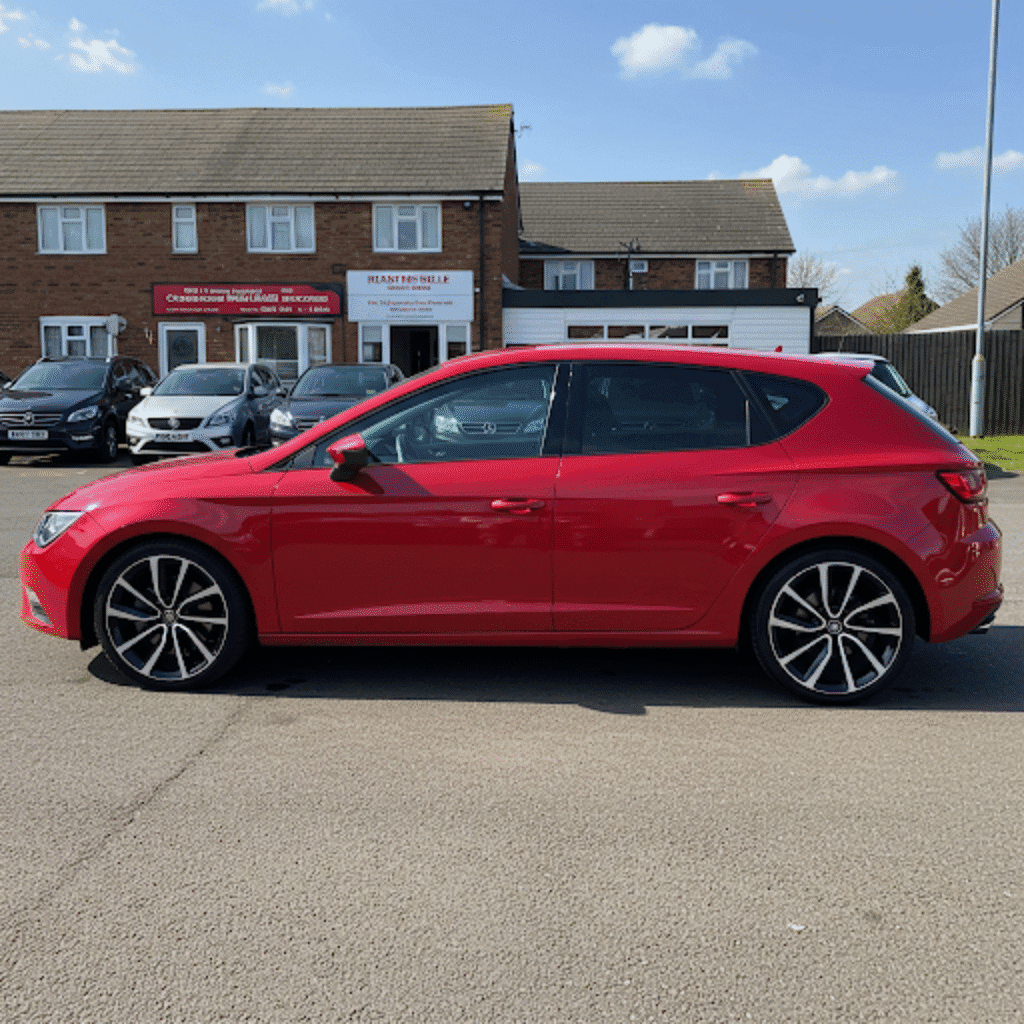
The SEAT Leon story began back in 1999, marking SEAT’s determined push into the C-segment hatchback market dominated by established players. Each generation has built upon the success of the last, refining the formula and adapting to changing consumer demands and technological advancements.
- Mk1 (1M, 1999-2005): The original Leon burst onto the scene with a confident, slightly aggressive design penned by Giorgetto Giugiaro. Based on the VW Group A4 (PQ34) platform shared with the Golf Mk4, Audi A3 Mk1, and Skoda Octavia Mk1, it immediately established itself as the sportier alternative. It was known for its solid build quality and capable handling. Performance variants, particularly the Cupra and later the potent Cupra R, quickly gained a cult following among driving enthusiasts.
- Mk2 (1P, 2005-2012): Designed by Walter de Silva (also known for stunning Alfa Romeo designs), the Mk2 Leon adopted a more rounded, distinctive look featuring signature elements like the ‘hidden’ rear door handles integrated into the C-pillar and swooping side character lines. It moved to the newer PQ35 platform (shared with the Golf Mk5). While some missed the Mk1’s sharper edges, the Mk2 offered improved refinement, a more modern interior, and continued the tradition of potent FR and Cupra models.
- Mk3 (5F, 2012-2020): This generation marked a significant step up for the Leon in terms of design, technology, and overall quality. Moving to the highly flexible and lighter MQB platform, the Mk3 featured a much sharper, more angular design language that proved incredibly popular. For the first time, the Leon range expanded beyond the standard 5-door hatchback to include a stylish 3-door ‘SC’ (Sport Coupé) and a highly practical ‘ST’ (Sport Tourer) estate version. Technology took a leap forward with improved infotainment systems and the availability of advanced driver aids. The range of efficient TSI petrol and TDI diesel engines broadened considerably, and the Cupra models continued to offer giant-killing performance.
- Mk4 (KL, 2020-Present): The latest iteration of the Leon embraces the digital age. While retaining an evolutionary exterior design that builds on the Mk3’s success, the interior saw a revolution with a minimalist approach dominated by large touchscreens and digital instruments. Connectivity and driver assistance systems are more advanced than ever. Powertrain options now include mild-hybrid (eTSI) petrol engines and plug-in hybrid (e-Hybrid) variants alongside traditional petrol (TSI) and diesel (TDI) options, catering to the growing demand for electrification. The high-performance Cupra models have now spun off into their own distinct brand, although Cupra Leon models are essentially the successors to the SEAT Leon Cupra.
Why is the SEAT Leon Such a Popular Choice?
The enduring appeal of the SEAT Leon isn’t down to just one factor, but rather a combination of desirable attributes that resonate well with UK drivers:
- Stylish Design: SEAT has successfully carved out a niche for itself with designs that are generally perceived as sharper, sportier, and more youthful than its VW Group stablemates. The Leon, particularly from the Mk3 onwards, boasts crisp lines and dynamic proportions that help it stand out.
- Engaging Driving Experience: While comfort is important, many Leon buyers appreciate its slightly firmer, more driver-focused setup compared to some rivals. It generally offers precise steering, good body control, and an agile feel, making B-roads more enjoyable without sacrificing too much everyday usability.
- Practicality: Despite its sporty pretensions, the Leon is a highly practical car. The 5-door hatchback offers ample space for passengers and a generously sized boot. The ST estate version, available from the Mk3 onwards, is positively cavernous, making it an excellent choice for families or those needing significant load-lugging capacity.
- Technology and Features: Especially in newer generations (Mk3 and Mk4), the Leon comes well-equipped. Even mid-spec models often feature touchscreens, smartphone integration (Apple CarPlay/Android Auto), air conditioning, alloy wheels, and various safety systems. Higher trims add luxuries like digital cockpits, adaptive cruise control, premium sound systems, and larger alloys.
- Wide Engine Range: Throughout its life, the Leon has been offered with a diverse range of petrol and diesel engines, catering to different priorities, from fuel efficiency to outright performance. Recent years have seen the addition of hybrid technology, broadening its appeal further.
- Value for Money: Often positioned slightly below the equivalent Volkswagen Golf in terms of price (both new and used), the Leon represents excellent value. You get much of the same underlying quality and technology but often with more standard equipment or a sportier image for your money.
Understanding SEAT Leon Trim Levels (Focusing on Mk3 & Mk4)
Navigating trim levels can sometimes be confusing, as names and specifications can change slightly over time. However, focusing on the popular Mk3 and Mk4 generations, here’s a general hierarchy often found in the UK market (specific features vary by model year):
- S (or SE Ecomotive): Typically the entry-level trim. Usually includes basics like air conditioning, electric front windows, a basic infotainment system, and essential safety features. Often focuses on efficiency (Ecomotive).
- SE: A step up, adding desirable features like alloy wheels, cruise control, electric rear windows, and often a better infotainment screen. A popular choice for balancing cost and equipment.
- SE Technology / SE Dynamic: These often build on the SE trim by adding integrated satellite navigation, upgraded infotainment, rear parking sensors, and sometimes larger alloy wheels or cosmetic enhancements. Represents a sweet spot for many buyers.
- FR (Formula Racing): The sporty trim level. Gets distinctive styling upgrades like unique bumpers, larger alloy wheels, twin exhaust pipes (often cosmetic), sports seats, a flat-bottomed steering wheel, and typically firmer sports suspension. It often comes with selectable driving modes.
- FR Sport: Builds on the FR trim, often adding features like larger alloys, heated seats, digital instrument clusters (in later models), and sometimes Alcantara upholstery.
- Xcellence: Positioned as a more luxury-oriented trim, running parallel to the sporty FR. Focuses on comfort and premium features. Expect upgrades like keyless entry and start, upgraded interior trim, ambient lighting, automatic wipers and lights, and sometimes different alloy wheel designs compared to FR.
- Xcellence Lux: The top-tier luxury trim, adding features over Xcellence such as leather upholstery, heated seats, adaptive cruise control, and more advanced driver assistance systems.
- Cupra (Mk1-Mk3 SEAT Leon Cupra / Mk4 Cupra Leon): The high-performance halo models. These boast the most powerful engines, significantly upgraded brakes and suspension, aggressive body kits, bucket seats, and the highest levels of standard equipment. Note that from the Mk4 onwards, Cupra operates as a separate brand, but the Cupra Leon is the direct performance successor.
When searching for a SEAT Leon for sale, carefully check the specific features listed for the exact model year and trim level, as optional extras could have been added by the original owner.
Engine Options: Powering Your Leon
The Leon has benefited from the VW Group’s extensive engine portfolio. Here are some common options you’ll find in used models, particularly Mk3 and Mk4:
- Petrol (TSI):
- 1.0 TSI: A surprisingly capable three-cylinder turbocharged engine, great for city driving and offering excellent fuel economy. Available in various power outputs (e.g., 95PS, 110PS, 115PS).
- 1.2 TSI / 1.4 TSI / 1.5 TSI Evo: These four-cylinder turbocharged engines represent the heart of the petrol range for many years (the 1.5 TSI Evo replaced the 1.4). They offer a great balance of performance and efficiency, available in power outputs typically ranging from 105PS up to 150PS. The 1.5 TSI Evo features cylinder deactivation technology for improved fuel economy under light load.
- 1.8 TSI / 2.0 TSI: Found in higher trims like FR and Xcellence, and forming the basis for the Cupra models. These provide strong performance and a much sportier driving experience. Power outputs vary significantly, especially in Cupra models (ranging from around 180PS in regular models up to well over 300PS in later Cupra variants).
- Diesel (TDI):
- 1.6 TDI: The mainstay for economy-conscious drivers, particularly high-mileage users. Offers excellent fuel efficiency (often exceeding 60mpg) but performance is adequate rather than exciting. Power outputs typically around 105PS to 115PS.
- 2.0 TDI: Provides a significant step up in performance and torque compared to the 1.6 TDI, making motorway driving effortless. Still offers good fuel economy. Available in various power outputs, commonly 150PS and 184PS (the latter often found in FR models).
- Hybrid (Mk4 onwards):
- 1.0 eTSI / 1.5 eTSI (Mild Hybrid – MHEV): These pair the petrol engine with a small electric motor and battery, providing assistance under acceleration and allowing the engine to switch off while coasting. Primarily aimed at improving efficiency and smoothness.
- 1.4 e-Hybrid (Plug-in Hybrid – PHEV): Combines a 1.4 TSI petrol engine with a larger electric motor and battery pack that can be charged externally. Offers a significant pure electric driving range (typically around 30-40 miles), potentially allowing for emission-free commuting. Delivers strong overall performance when both power sources work together.
Gearbox choices typically include a slick-shifting manual (5 or 6-speed) or a quick-shifting DSG (Direct-Shift Gearbox) automatic transmission. While convenient, ensure DSG gearboxes have been serviced according to schedule, especially on higher-mileage examples.
Buying a Used SEAT Leon: What to Check
Finding a great SEAT Leon for sale requires doing your homework. Here’s a checklist for inspecting a potential purchase:
- History Check: Always perform an HPI check or similar vehicle history check to uncover any hidden past, such as outstanding finance, insurance write-offs, or mileage discrepancies.
- Service History: Look for a complete and documented service history, ideally from main dealers or reputable specialists. Pay attention to intervals for major items like cambelt changes (if applicable to the specific engine) and DSG gearbox oil changes.
- Bodywork: Inspect carefully for signs of accident damage (mismatched paint, uneven panel gaps), rust (check wheel arches, sills, boot floor), and significant dents or scratches.
- Interior: Check for excessive wear and tear on the seats (especially bolsters on sports seats), steering wheel, gear knob, and pedals, which could indicate hard use or inaccurate mileage. Test all switches, buttons, and the air conditioning. Ensure the infotainment system works correctly.
- Engine and Gearbox: Listen for unusual noises from the engine on start-up and while running. Check for smoke from the exhaust (blue smoke indicates oil burning, black smoke excessive fuel, white smoke could be coolant). If it’s a manual, ensure the clutch operates smoothly without slipping or juddering. For DSG automatics, check for smooth gear changes both up and down, without hesitation or jerky movements, especially at low speeds.
- Suspension and Brakes: Listen for knocks or bangs from the suspension when driving over bumps. Check the brakes feel strong and progressive, without pulling to one side. Inspect the tyres for even wear and sufficient tread depth.
- Electrics: Test everything – lights, wipers, windows, central locking, parking sensors, infotainment features. Electrical gremlins can be annoying and sometimes costly to fix.
- Test Drive: A thorough test drive covering various road types and speeds is essential. Pay attention to how the car drives, listens for noises, and ensures everything feels ‘right’.
- Common Issues: Be aware of potential known issues for specific models/engines. For example, early TSI engines (pre-MQB) could have timing chain issues, water pump leaks can occur, and diesel models used primarily for short trips can suffer from DPF (Diesel Particulate Filter) blockages. DSG reliability can be a concern if maintenance has been skipped. Research forums specific to the generation you are considering.
Where to Find Your SEAT Leon
You have several options when looking for a SEAT Leon for sale in the UK:
- SEAT Approved Used: Buying from a main dealer offers the most peace of mind. Cars typically come with rigorous checks, a comprehensive warranty, breakdown assistance, and sometimes service packages. Prices are usually higher, but the security can be worth it.
- Independent Dealerships: Often offer competitive pricing and a wider variety of ages and specifications. Reputation is key – look for established dealers with good reviews. Warranties will vary.
- Car Supermarkets: Can offer attractive prices due to high volume, but the buying experience might be less personal. Carefully check the preparation standards and warranty details.
- Private Sellers: Often the cheapest way to buy, but offers the least protection – sales are typically ‘sold as seen’. Requires careful inspection and checks by the buyer.
- Online Marketplaces: Websites like Auto Trader, Motors.co.uk, Gumtree, and eBay Motors list cars from all types of sellers. Use their search filters effectively but always arrange to view and inspect the car in person before committing.
Running Costs: Owning a SEAT Leon
The Leon is generally considered reasonable to run.
- Insurance: Insurance groups vary widely depending on the trim level and engine. Lower-powered SE models sit in relatively low groups, while high-performance Cupra models are significantly higher. Get quotes before buying.
- Road Tax (VED): VED costs depend on the car’s registration date and CO2 emissions. Models registered before April 1st, 2017, have VED based purely on CO2 bands (some highly efficient models might even be free). Cars registered after this date fall under a different system, typically involving a standard annual rate (with a surcharge for cars costing over £40,000 new for the first five years of this standard rate period) plus a first-year rate based on emissions. Hybrid models often benefit from reduced rates.
- Fuel Economy: Generally good across the range. TDI diesels excel on motorways, while smaller TSI petrol engines are efficient around town. Real-world figures depend heavily on driving style and conditions. Hybrid models offer the potential for ultra-low running costs if charged regularly and used mainly for shorter journeys.
- Servicing and Parts: As part of the VW Group, parts are readily available, and servicing costs are typically competitive with rivals like Ford and Vauxhall. Independent specialist garages can often offer cheaper servicing than main dealers, especially for older cars.
Considering Alternatives?
While the Leon is a fantastic choice, it’s worth knowing the main rivals:
- Volkswagen Golf: The benchmark. Offers a slightly more premium feel and higher badge prestige, but often costs more and can feel less exciting to drive than the Leon.
- Ford Focus: Renowned for its superb handling and driving dynamics. Offers a wide range of models and engines. Interior quality might not always match the Leon/Golf.
- Vauxhall Astra: A strong contender, particularly in later generations, offering good value, comfort, and efficiency.
- Skoda Octavia: Shares platforms and engines with the Leon/Golf but prioritises practicality and space above all else. Offers huge boot space and excellent value.
- Audi A3: The premium option based on the same platforms. Offers a higher quality interior, stronger badge appeal, but comes with a significantly higher price tag.
Conclusion: Is a Used SEAT Leon Right for You?
The SEAT Leon has consistently proven itself to be a formidable player in the UK car market. It successfully blends stylish aesthetics, a fun-to-drive nature, solid practicality, and strong value, making it an appealing proposition for a wide range of buyers. From the economical 1.0 TSI SE Dynamic perfect for navigating city streets and commutes, to the capacious ST estate ideal for growing families, or the thrilling Cupra models for performance enthusiasts, there’s likely a Leon configuration that fits the bill.
By understanding the different generations, trim levels, and engine options, and by conducting thorough checks when viewing potential cars, you can confidently navigate the used market. Whether you prioritise low running costs, sporty handling, cutting-edge tech, or maximum luggage space, finding a well-maintained SEAT Leon for sale could be your ticket to owning one of the best all-round family hatchbacks available today.

